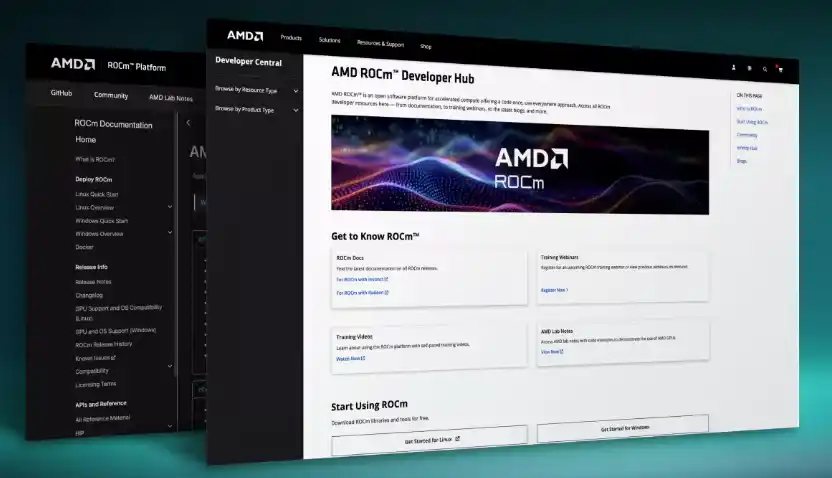Table of Contents
For years, Nvidia has been the undisputed champion in the realm of Artificial Intelligence (AI) hardware. Their strategic market entry, cutting-edge research, and robust software ecosystem specifically designed for their GPUs have solidified their position as the industry leader. However, a challenger has emerged – AMD – and they’re making a strong case for their AMD AI Hardware solutions.
At the recent Microsoft Build 2024 conference, AMD emphasized that developers can leverage their AMD AI Hardware using the very tools and frameworks they already know. “If you’re comfortable with PyTorch, TensorFlow, or JAX, your existing notebooks or scripts will just run on AMD hardware,” declared AMD senior director Ian Ferreira. This extends to inference engines as well, with AMD showcasing compatibility with BLLM and Onyx.
Imagine this: you’re working on a cool AI project and want to try out some new hardware to make it run even better. But the thought of having to rewrite all your code from scratch to make it work with the new hardware is a total drag. That’s where AMD AI Hardware comes in. Because it’s seamlessly compatible with existing AI tools, you can just swap out your old hardware for AMD’s and keep working on your project without any hassle. This saves you a ton of time and money you’d otherwise spend on rewriting code. Plus, you can get your project up and running much faster. That’s a win-win for any developer!
Another thing developers love is flexibility. They want to be able to try out different things to see what works best. AMD AI Hardware’s compatibility with existing tools gives developers that freedom. They can easily use AMD’s hardware with their current projects and play around to find the perfect fit. This lets them build even better AI models, and that’s what it’s all about, right?
AMD ROCm vs. Nvidia CUDA
A major hurdle for developers seeking alternatives to Nvidia has been CUDA, Nvidia’s proprietary programming model and API. While CUDA has become the industry standard for AI development, its closed nature restricts options and creates vendor lock-in for developers. This means developers are confined to working within Nvidia’s ecosystem, limiting their choices and potentially hindering innovation.

AMD’s counter-punch is their open-source ROCm framework, a direct competitor to CUDA. By embracing open source, AMD fosters collaboration and innovation within the developer community. This approach stands in stark contrast to Nvidia’s legal actions against projects attempting to create compatibility layers for AMD GPUs. AMD’s open-source philosophy empowers developers, fostering a more collaborative and dynamic environment where everyone benefits from advancements.
Further solidifying AMD’s position is a key partnership with Hugging Face, the world’s largest repository of open-source AI models. This collaboration ensures compatibility with a vast library of AI models on AMD AI Hardware. Additionally, AMD offers native support and acceleration tools like ONNX model execution and DeepSpeed for ROCm, streamlining the development process from beginning to end. Developers can leverage these tools to build and train powerful AI models efficiently on AMD AI Hardware.
Can AMD Steal Nvidia’s AI Throne with AMD AI Hardware?
Dethroning Nvidia is a monumental task. Nvidia is a well-established player with a loyal developer base accustomed to the familiar CUDA ecosystem. They also continuously innovate, making it a challenge for developers to switch infrastructures entirely. However, AMD’s focus on open-source development, strategic partnerships, and native compatibility offers a compelling alternative. Developers seeking more freedom, potentially lower costs, and a wider range of choices in the AMD AI Hardware market will find AMD’s approach highly attractive.
While the battle between AMD and Nvidia is far from over, AMD’s recent advancements are shaking up the AI hardware landscape and giving developers a much-needed choice. This fosters a more competitive environment that ultimately benefits the entire AI development community. With AMD AI Hardware offering a viable alternative, developers now have the freedom to choose the platform that best suits their needs and budget. This spurs innovation across the board, accelerating the development of cutting-edge AI technologies.